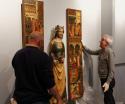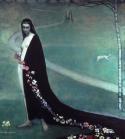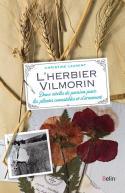Art Of The Day Weekly
#411 - from 17 December 2015 to 6 January 2016
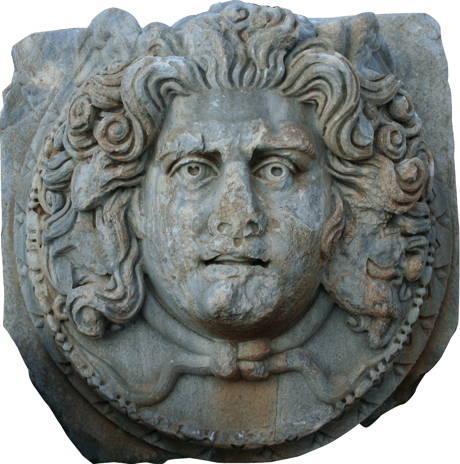
Round marble relief with Medusa’s head, Leptis Magna, Severan age (early 3rd c. AD), H 80 cm. © Università Roma Tre Archaeological Mission in Libya / Fabian Baroni, Courtesy of ICOM Red List.
IN THE AIR
SOS Libya
We all have in mind images of the temples of Palmyra, reduced to dust – like those fifteen years earlier of the empty niches of Bamiyan. The growing setting up of IS in Libya leads to new speculations. Will the heritage of this country in the midst of political turmoil undergo the same fate as that of Iraq and Syria? Libya has a series of major sites– Leptis Magna, Cyrene, Sabratha are the best known trilogy – an essential link in the Mediterranean civilization. For now, the most serious damage has been caused by the destruction of Sufi mosques, rampant urban development and theft. How can we fight illegal diggings and traffic of goods? According to the experts and the recent report by Jean-Luc Martinez, President of the Louvre museum, the best way is to act on the demand: improve the control on the origin and traceability of ancient objects, favour cooperation between museums, give customs improved tools, create a “right to asylum” for works of art from countries in conflict. This is the spirit that inspired the ICOM (International Council of Museums) to publish a red list of the Libyan cultural goods at risk. These 69 major examples illustrate the variety and beauty of these objects that could be victims of international traffic: marble steles and busts, mosaics, amphorae, sarcophagi, coins and glass pearls. These could fill a number of museums or illegal collections. And could contribute to awaken consciences.
MUSEUMS
L'Aquila, a new start
L’AQUILA – No need to have humans to carry out large scale destruction, as the capital of the Abruzzi can testify. Since the earthquake on 6 April 2009, the city is stuck in its ruins. Very little has been done to rebuild the deserted downtown area, even if the mayor, Massimo Cialente, is confidant a major construction site is about to begin. In the meantime, a symbolic phase will be reached on 19 December 2015 with the inauguration of MUNDA. Behind this obscure acronym (a tendency for abbreviations that does not seem to wane) can be seen the Museo Nazionale d’Abruzzo. As the previous headquarters, a castle of the XVIth century, was largely damaged, the museum is now settled in the former municipal slaughter house, in front of the famous fountain of the 99 water jets. Some one hundred works are exhibited, in particular Madonnas from the XII and XIIIth centuries and Christ and the adulterous woman by Mattia Preti.
• The Museo Nazionale d’Abruzzo will reopen on 19 December 2015.
EXHIBITIONS
American artist Romaine Brooks and the roaring twenties
VENICE – Painter Romaine Brooks (1874-1970) has fallen into oblivion even though she knew all the high crust of intellectual Europe in the period between the two wars: D’Annunzio (with whom she had an intense relationship), Cocteau, Man Ray, Paul Morand, Ida Rubinstein and the team of the Ballets russes, marquise Casati and the duchess of Gramont. A disciple of Whistler’s, influenced by the blooms of Art nouveau, this wealthy Amercian heiress did not paint more than 70 paintings in her life – mostly portraits with a very defined psychology. The exhibition includes a election, as well as drawings that are particularly synthetic and expressive (often autobiographic memories), and her photographs (Ida Rubinstein nude) which have hardly ever been shown. She travelled between Capri, Rome and Paris, was the companion of Natalie Clifford Barney, another American icon of Saint-Germain-des-Prés who lived just as long (1876-1972), and symbolized a cultivated cosmopolitism, the nostalgia of a period in which Europe was free, creative, without borders and eccentric. An aspect of Europe we have unfortunately fogotten.
• Romaine Brooks at Palazzo Fortuny, from 19 December 2015 to 13 March 2016.
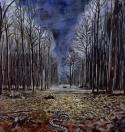
Anselm Kiefer, Resurrexit, 1973, oil, acrylic and charcoal on hessian, 290 x 180 cm, Sanders Collection, Amsterdam © Atelier Anselm Kiefer.
Kiefer and the wounds of History
PARIS - It is not easy to be born in Germany in 1945, on the rubble of Nazism. Anselm Kiefer, born two months before the end of the war, spent a large part of his artistic career on the theme of guilt, of mourning, of absence. The exhibition presents a half century of paintings, installations and artist books. The image of the ruins, ever present throughout his childhood, reappeared in his towers, in his burnt books, in the erased tombs and towns. Nourrished by his love for nature and poetry (in particular Celan, to whom he paid tribute in the Monumenta exhibition in Paris in 2007), Kiefer continues to this day to look into History – for example, in 1991, the sea lion (invasion of England by submarines) and, in 2012, the unbelievable Morgenthau plan (transformation of Germany into an agricultural country).
• Anselm Kiefer at Centre Pompidou, from 16 December 2015 to 18 April 2016.

Suspended Volume, 1968 (Soto, Workshop rue des Blancs Manteaux, Paris, 1968, Photograph by Michel Desjardins).
Soto, mobile
RODEZ – Jesús Rafael Soto (1923-2005) was never without his friend and exact contemporary Carlos Cruz-Diez (alive today).They spent wild evenings together listening to music: Soto was a guitarist after all in the band of Hugues Aufray. But the Venezuelan artist is mostly known as one of the popes of kinetic art, which he worked on under various shapes and forms, from spirals in the style of Duchamp to aerian cubes, including the penetrables, those forests of long plastic spaghetti, of which the Centre Pompidou had exposed an example in the past which thrilled children and adults alike. Some forty work soy art establish a given panorama, with an important contribution from the Centre Pompidou and the family.
• Jesús Rafael Soto at the musée Soulages, from 12 December 2015 to 30 April 2016.
BOOKS
Vilmorin, a miraculous survival
Ten cubic metres, two centuries of collecting, 56 000 botanic charts: a unique heritage, which almost web tôt hé rubbish when the botanical laboratory at the university of Orsay closed in 199. It took a combination of circumstances, the commitment of passionate volunteers and the support from certain authorities for this monumental herbarium of Vilmorin to be purchased by the town of Verrières-le-Buisson, where the company used to have its headquarters, and for it to be classified as a historical monument. Louise de Vilmorin, one of the descendants of the dynasty, had been the companion of Malraux, who had defined the inventory of the patrimony? This is one of the historical allusions in this saga of the herbarium, which can be read like a novel, from the French Revolution to our day, presenting in the supporting roles Buffon, Lamarck, Parmentier or landscape artist Edouard André. It can also be read like a summary of questions which worry us today – genetical selection, natural prairies, wild varieties. We can note that Belin, who published this book, was created in 1777, two years before Philippe-Victoire de Vilmorin became the sole owner of t he Andrieux-Vilmorin company. Another historical allusion.
• L’herbier Vilmorin, by Christine Laurent, publishing house Belin, 2015, 192 p., €29.90.
OPENINGS OF THE WEEK

ETHAN MURROW
17 December 2015 - PARIS - La Galerie Particulière
A virtuoso in lead pencil drawing of often mysterious compositions
IN BRIEF
COLMAR – The Unterlinden museum, which holds among other works the Issenheim Altarpiece by Matthias Grünewald, reopened on 12 December 2015 after three years of renovations.
MADRID - Following an agreement between the two entities, the Prado museum will continue to exhibit four major works that belonged to the Patrimonio Nacional (National Heritage), among which the Jardin des délices by Jérôme Bosch.
PARIS – The Rosa Parks "forum-wall", the largest fresco of street art in the capital, will be inaugurated on 19 December 2015 at 164 rue d'Aubervilliers (75019).

